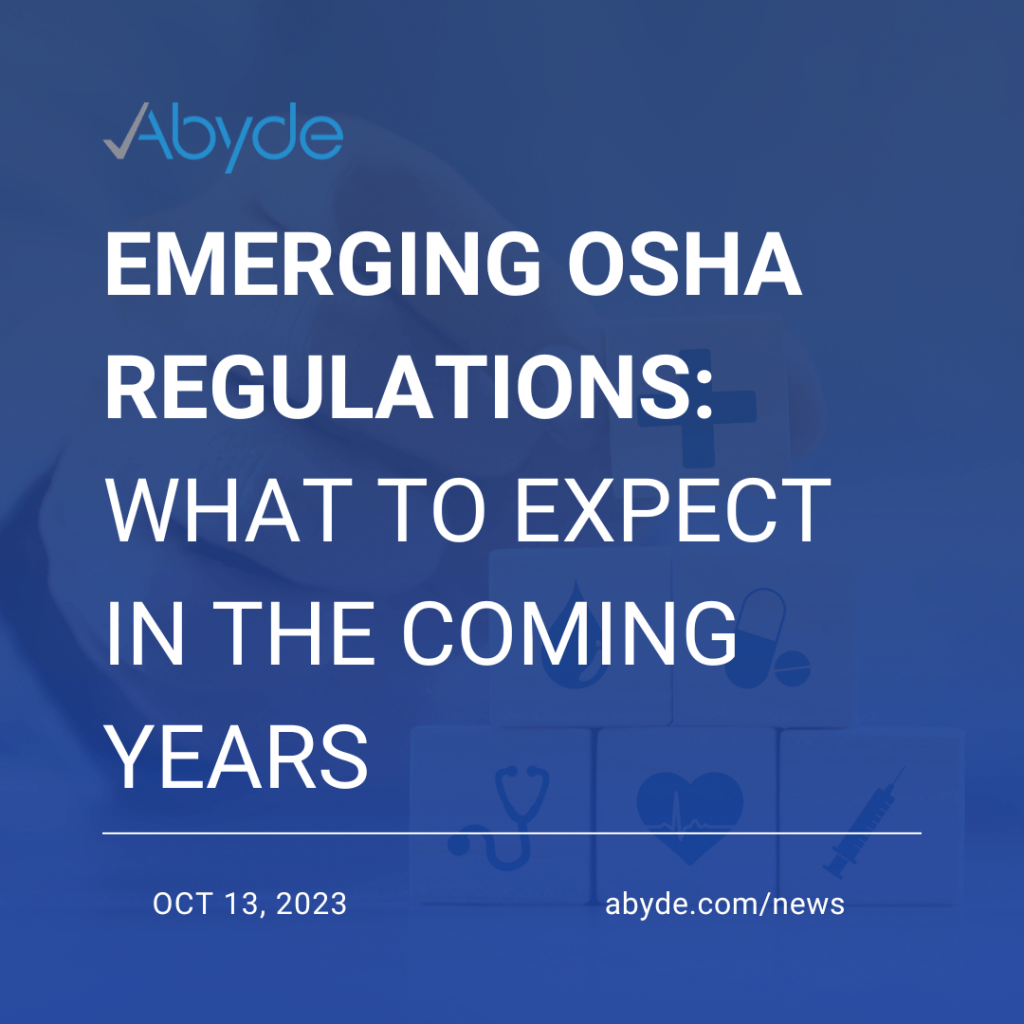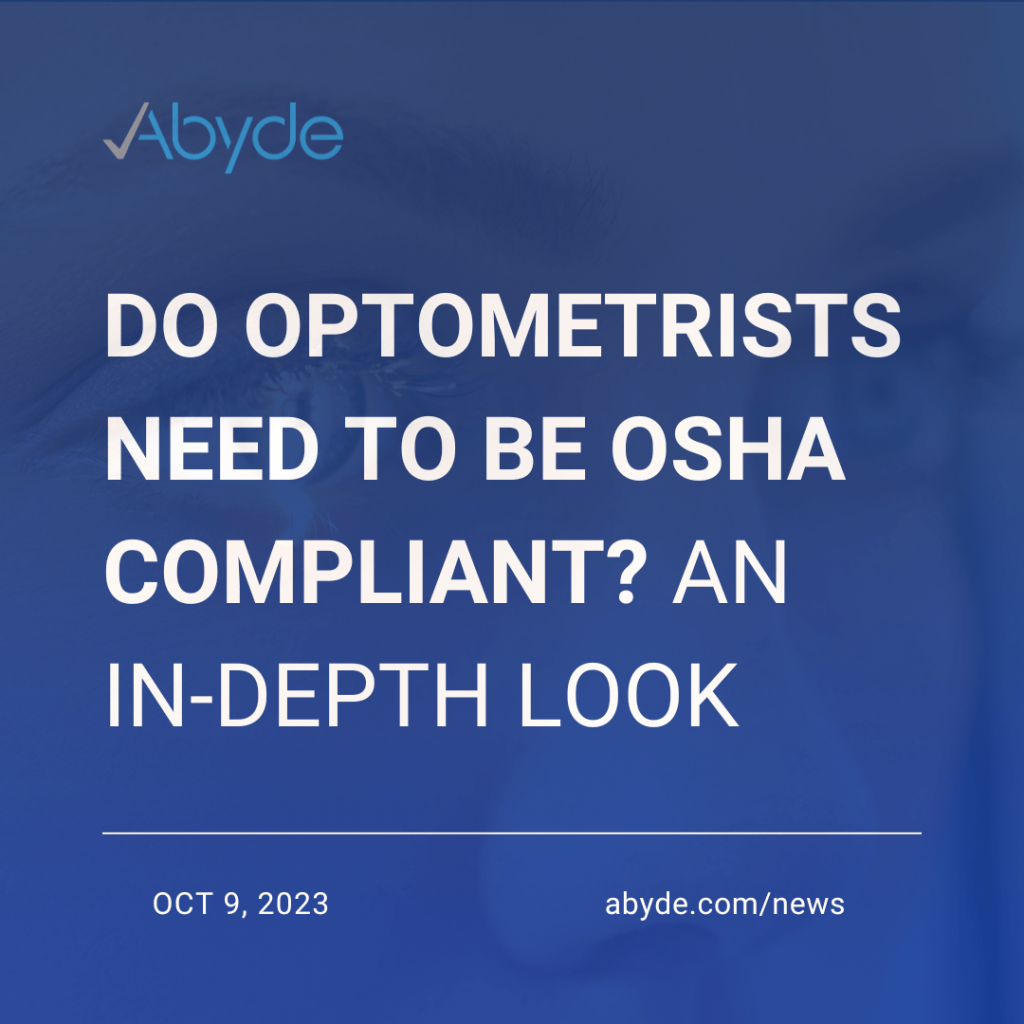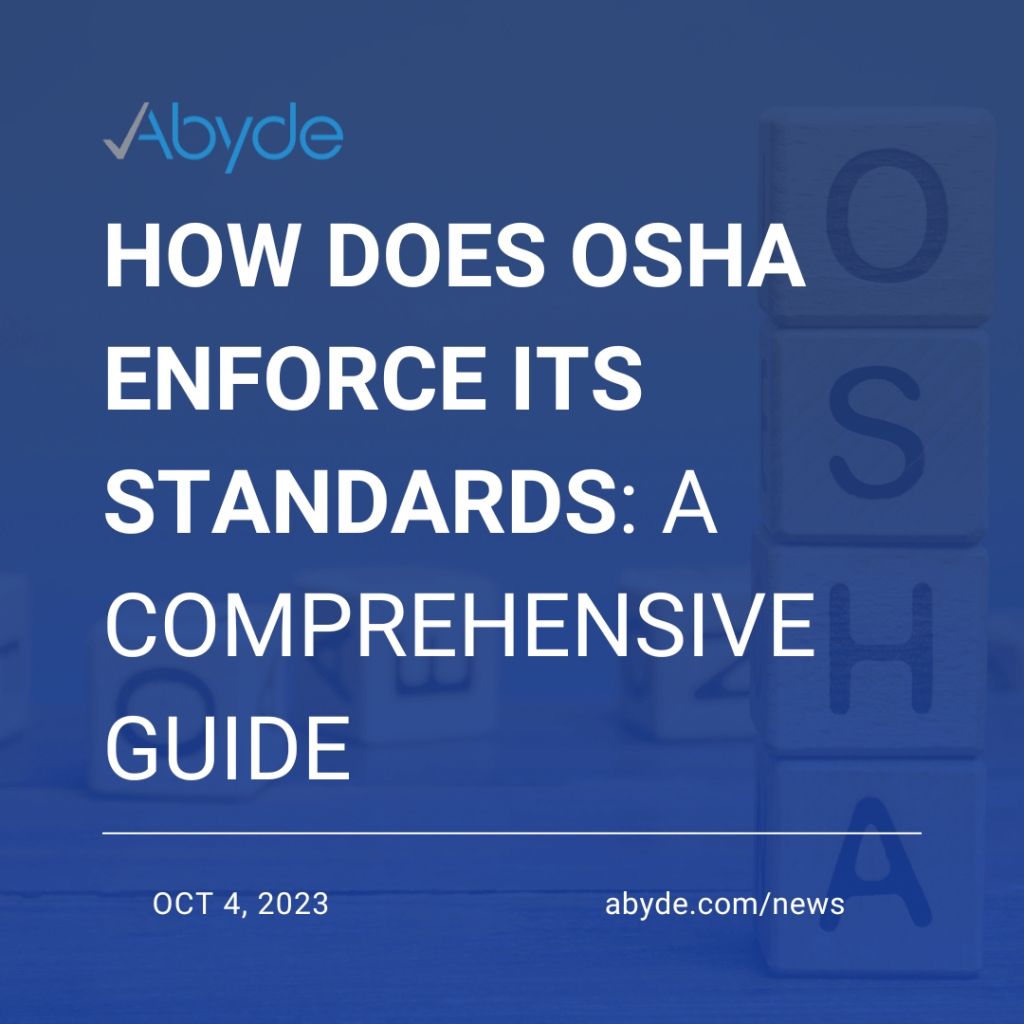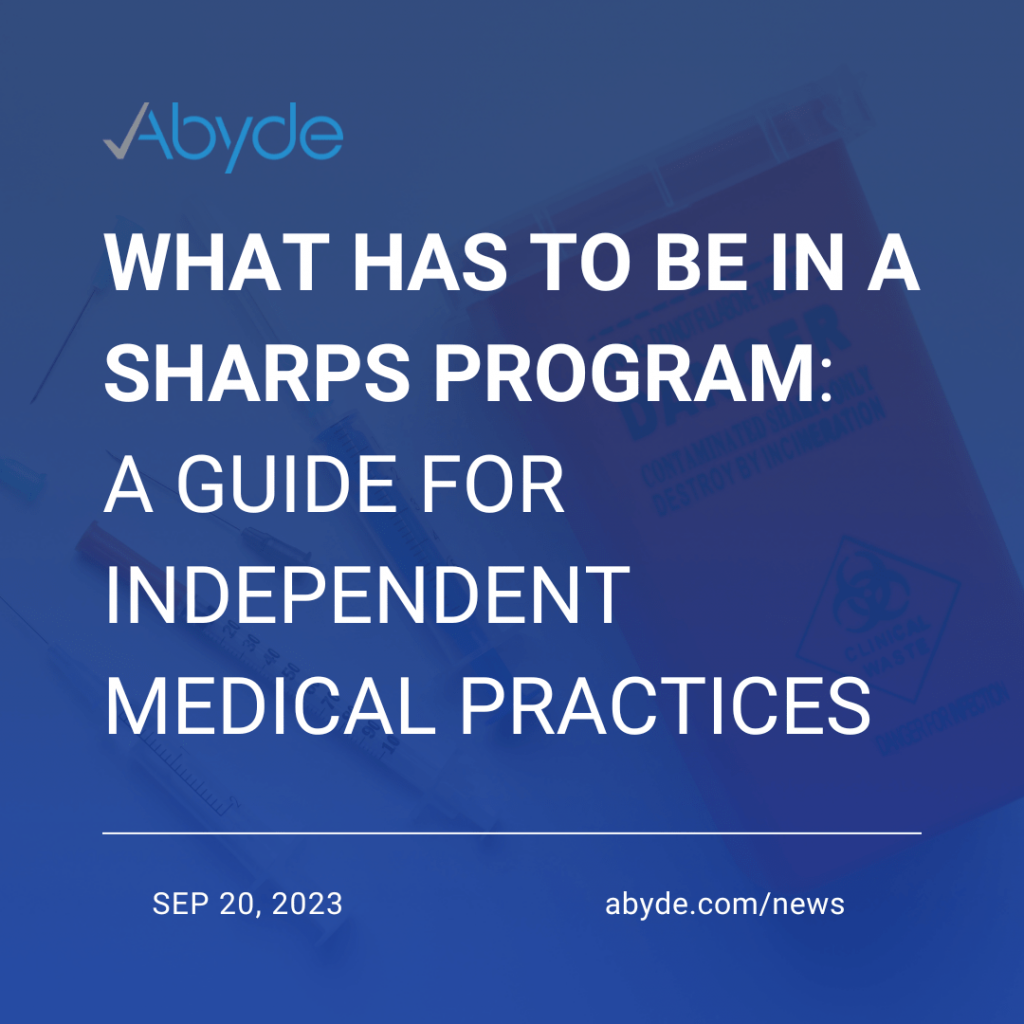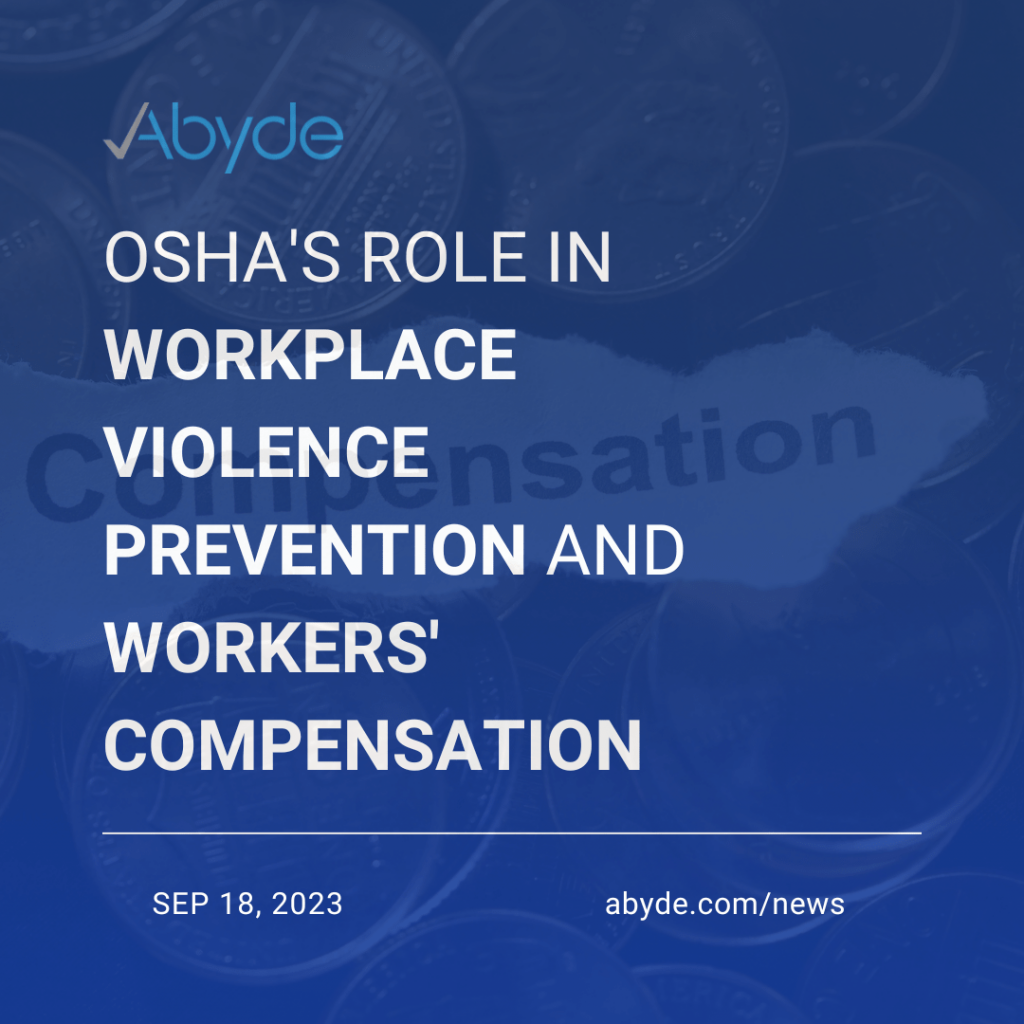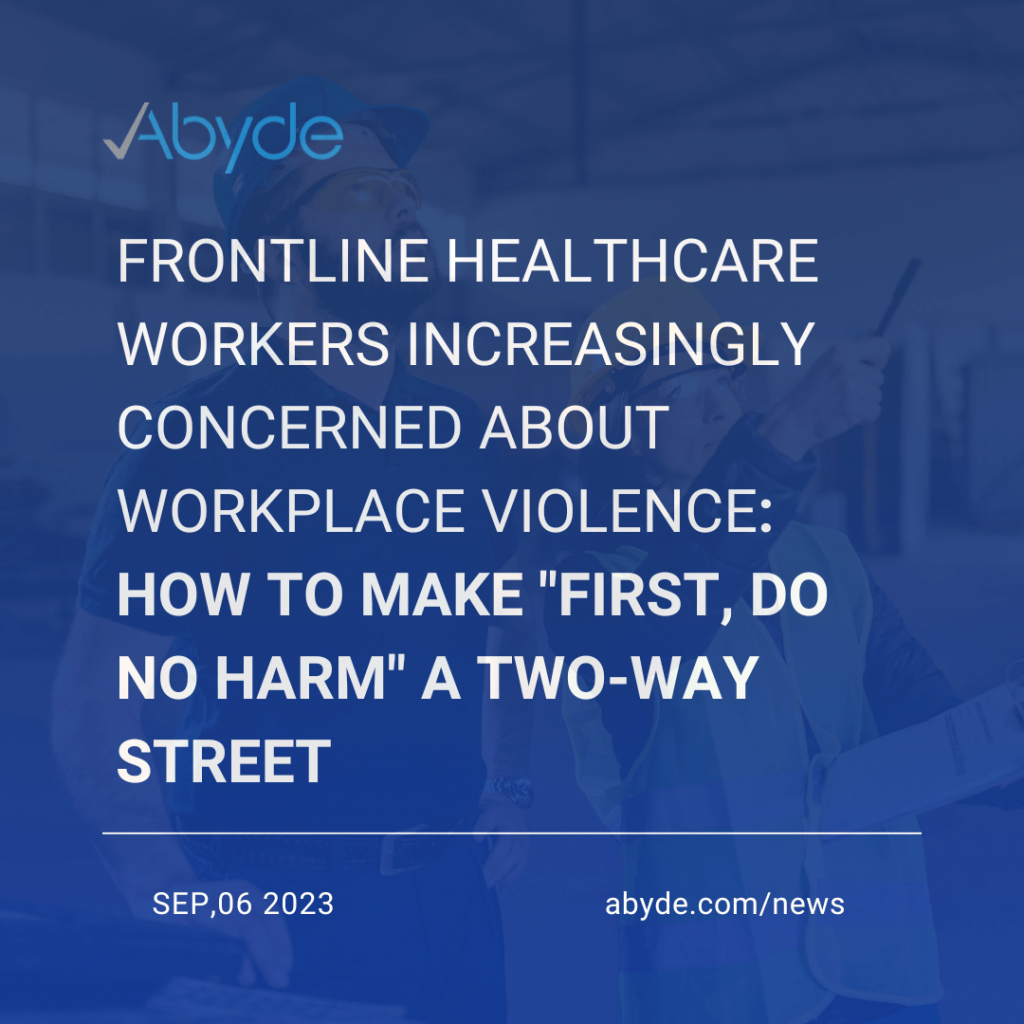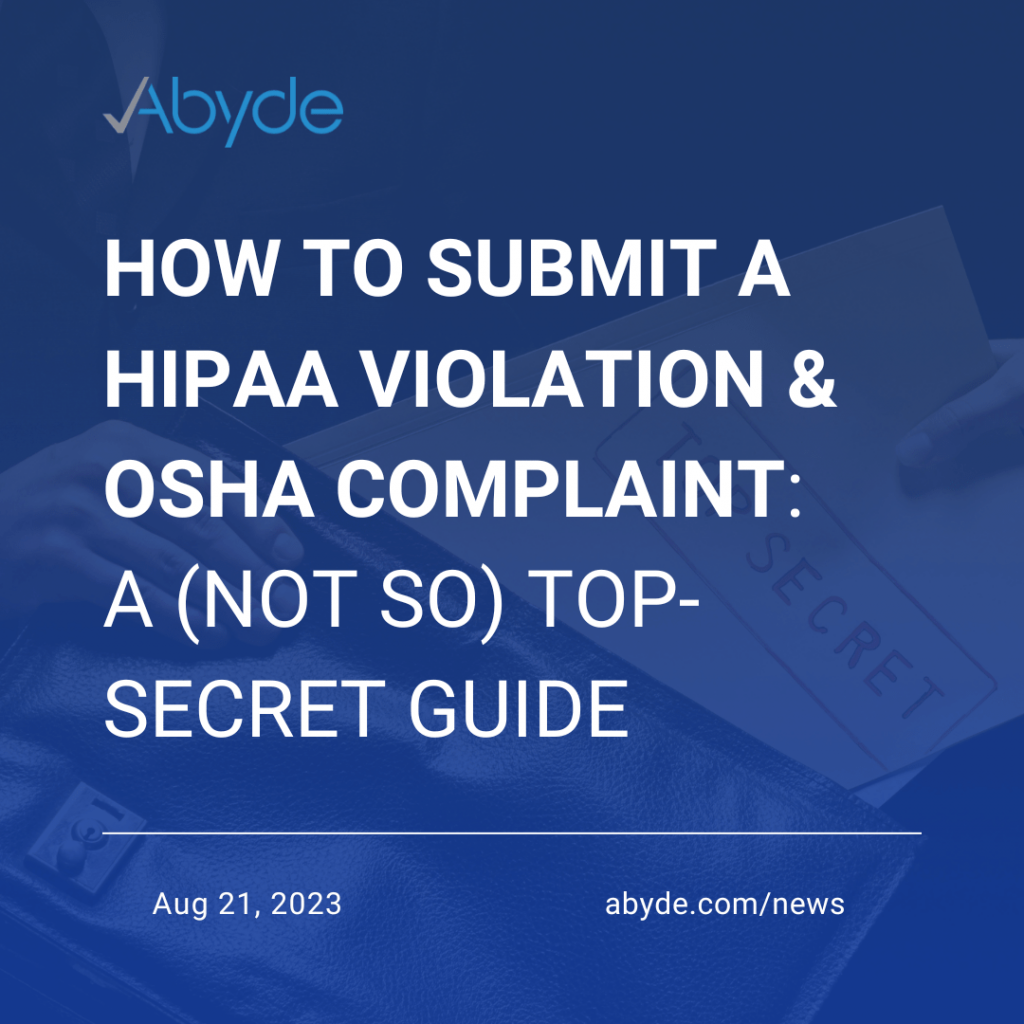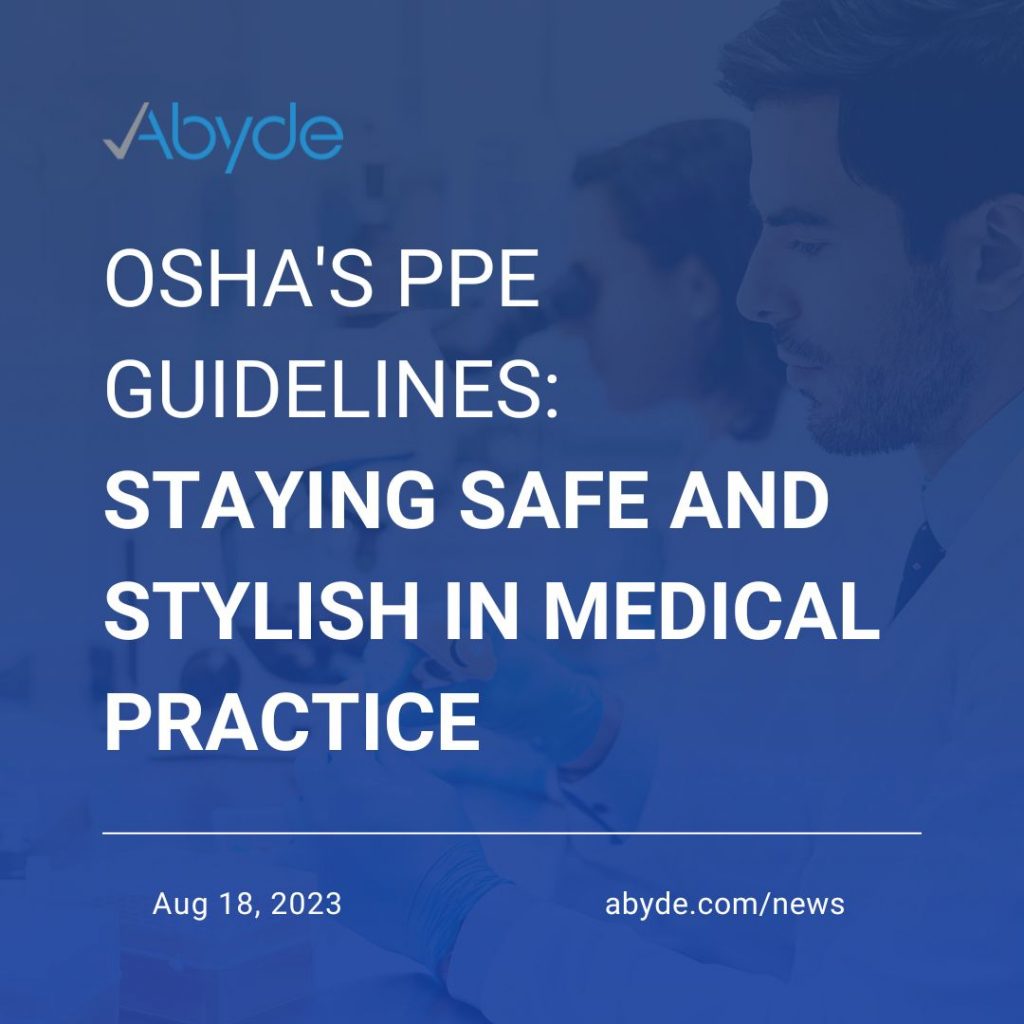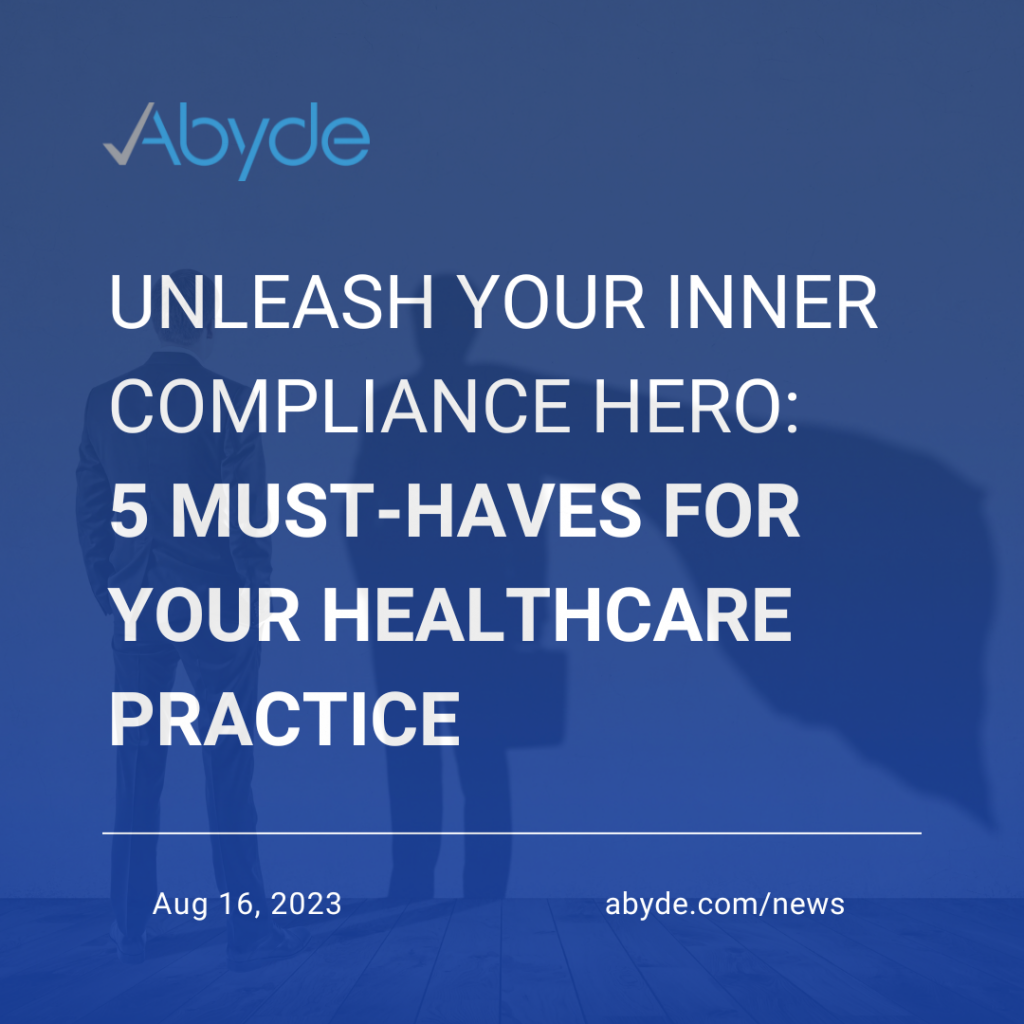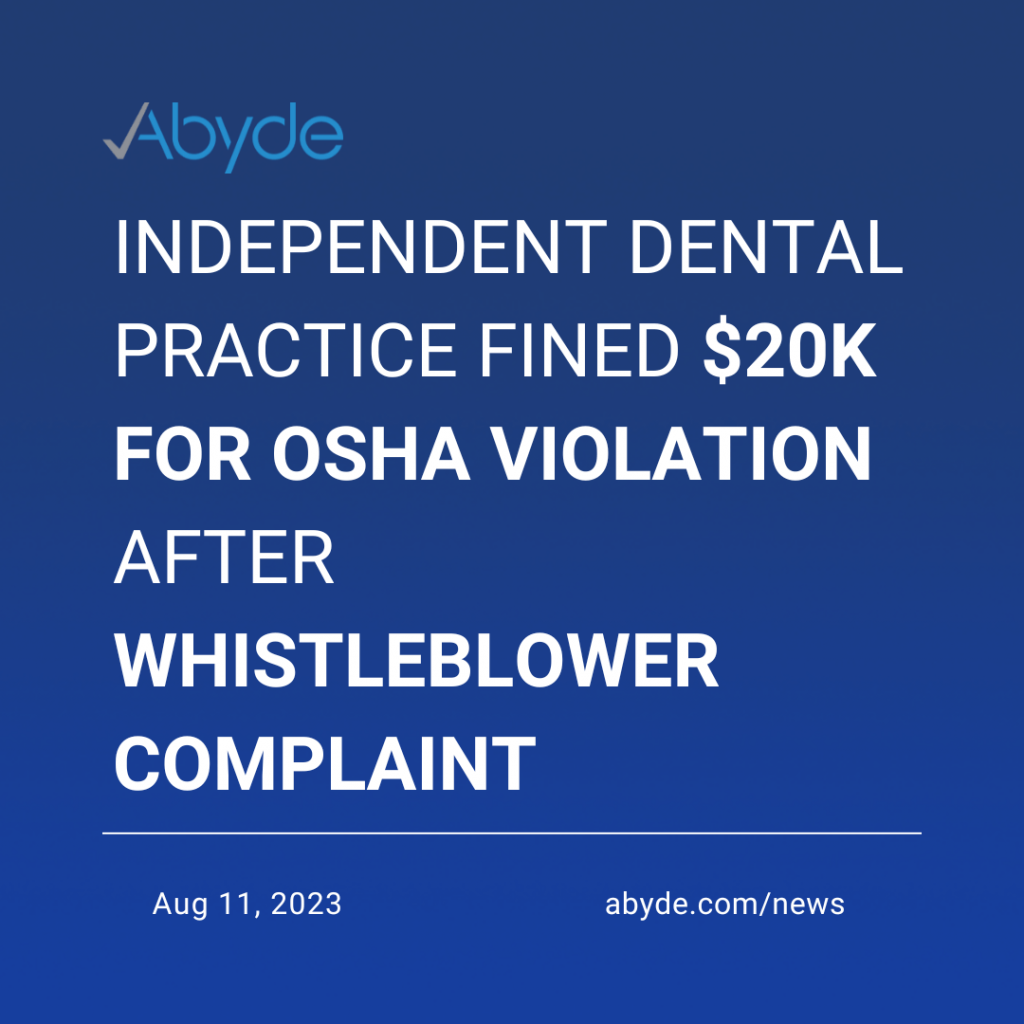October 13, 2023 Introduction The Occupational Safety and Health Administration (OSHA) is a dynamic organization, constantly updating its regulations and guidelines to reflect the evolving landscape of workplace safety and health. As a covered entity, staying ahead of these changes is not just a matter of compliance; it’s a commitment to the well-being of your workforce. In this article, we will delve into what to expect in the realm of emerging OSHA regulations and how you can prepare for them. The Ongoing Pandemic’s Impact The COVID-19 pandemic has had a profound impact on workplace safety protocols. While some temporary measures may be phased out, others, such as enhanced sanitation and air quality guidelines, could become permanent fixtures of OSHA regulations. Companies may need to invest in better HVAC systems or air purifiers to ensure a safe working environment. Technological Advances With advancements in technology, OSHA is likely to adopt more data-driven approaches. Implementing wearables that monitor employee posture, heart rate, or exposure to harmful substances may become commonplace. This data could be invaluable for both employers and OSHA in assessing workplace safety levels and compliance. Mental Health Considerations As awareness around mental health grows, OSHA may introduce regulations that address workplace stress, bullying, and other mental health issues. This could require employers to provide mental health resources or training programs to reduce workplace stress. Green Initiatives With an increasing focus on sustainable practices, future OSHA regulations could require companies to adopt eco-friendly measures. These could range from waste management to using green materials in construction and manufacturing processes. Failure to adopt such measures could result in fines and damage to a company’s reputation. Increased Fines and Penalties The trend has been clear: OSHA is increasing fines and penalties for non-compliance. The financial repercussions of failing to adhere to OSHA regulations will likely become more severe, making compliance a financial imperative as much as a moral and legal one. Gig Economy and Remote Work The rise of the gig economy and remote work poses new challenges for OSHA. Traditional regulations focusing on physical workplaces may evolve to include home offices or shared workspace guidelines. Such guidelines may concern ergonomic setups, electrical safety, and even cybersecurity. Preparation for Emerging Regulations Conclusion As the nature of work evolves, so will OSHA regulations. By staying ahead of these changes, you protect your employees and shield your organization from potential legal complications and fines. The future may be uncertain, but preparation and attentiveness will go a long way in navigating the complexities of emerging OSHA regulations.By equipping yourself with the knowledge and tools to adapt to these new norms, you’re not just complying with the law but also making a long-term investment in the health and safety of your workforce. Need help or have questions? Click here to schedule a complimentary compliance consultation with an expert today!
Do Optometrists Need to be OSHA Compliant? An In-Depth Look
October 9, 2023 In the healthcare sector, there’s often a misconception that only large hospitals or medical practices must concern themselves with compliance standards. This is far from the truth, especially regarding regulations like those set forth by the Occupational Safety and Health Administration (OSHA). So, where do optometrists fall on the compliance spectrum? What is OSHA? The Occupational Safety and Health Administration (OSHA) is a branch of the United States Department of Labor that sets guidelines and standards to ensure safe and healthy working conditions. OSHA regulations encompass a variety of industries, including healthcare, construction, manufacturing, and more. OSHA Regulations and Optometry Practices OSHA regulations apply to any workplace where there is a potential for injury or illness. In an optometry office, employees are exposed to various risks, ranging from potentially hazardous chemicals used for cleaning lenses to sharp objects like needles or scalpel blades that might be used in minor procedures. Key Areas of Compliance for Optometrists Penalties for Non-Compliance Non-compliance could result in significant financial penalties and even temporary or permanent closure of the practice. OSHA regularly conducts inspections, and failure to meet the standards can result in hefty fines, which can severely affect the financial stability and reputation of the practice. Are There Any Exemptions? There are very few exemptions to OSHA compliance. Even if an optometry practice has few employees, they must usually adhere to OSHA regulations. Optometrists must ensure they are fully aware of and in compliance with all relevant OSHA regulations to avoid penalties and maintain a safe work environment. Conclusion In summary, the need for OSHA compliance in optometry practices is not just a recommendation—it’s a legal requirement. Ignoring these standards puts your practice at risk for penalties and jeopardizes the safety of your employees and patients. How Can Abyde Help? Navigating through the complex web of OSHA compliance can be overwhelming. That’s where Abyde comes in. We specialize in HIPAA and OSHA Compliance solutions for healthcare providers. Our software can guide you through the process, ensuring that your optometry practice remains compliant without taking up much time. Take the first step toward full OSHA compliance today. Visit our website to schedule a free consultation and discover how Abyde can make compliance hassle-free for your practice. Resources
How Does OSHA Enforce Its Standards: A Comprehensive Guide by Abyde
October 4, 2023 Ensuring a safe and healthy workplace is a priority for employers across industries. The Occupational Safety and Health Administration (OSHA) plays a crucial role in setting and enforcing standards aimed at guaranteeing employee safety. But how does OSHA enforce these regulations? In this comprehensive guide, we break down the different mechanisms that OSHA employs to ensure compliance, including inspections, citations, and penalties. The Role of OSHA in Workplace Safety Established by the Occupational Safety and Health Act of 1970, OSHA is a federal agency responsible for maintaining health and safety regulations across workplaces in the United States. Its mission is to “assure safe and healthy working conditions for working men and women” (OSHA). Types of OSHA Inspections One of the primary ways that OSHA enforces its standards is through inspections, which can be categorized into various types: OSHA Citations and Penalties If a violation of OSHA standards is discovered, the agency issues citations that can carry hefty financial penalties. Fines can vary depending on the severity of the violation and can range from thousands to hundreds of thousands of dollars. Employers can contest these citations and may also be subjected to criminal charges in extreme cases (OSHA Penalties). OSHA’s Whistleblower Protections OSHA also enforces 22 federal whistleblower statutes to protect employees who report violations of various workplace safety regulations. This encourages employees to report unsafe conditions without fear of reprisal (OSHA Whistleblower Protection). How Abyde Can Help Ensuring OSHA compliance can be challenging, but you don’t have to do it alone. Abyde provides a comprehensive SaaS solution aimed at simplifying HIPAA and OSHA compliance for healthcare providers. Our platform helps you stay updated with the latest regulations, undergo training, and prepare for potential inspections, ensuring that you meet OSHA’s stringent standards. Conclusion OSHA plays a critical role in enforcing workplace safety standards across various industries. Through inspections, citations, and whistleblower protections, OSHA ensures that employers maintain a safe environment for their workforce. For more information about how Abyde can assist your healthcare organization in meeting OSHA and HIPAA compliance standards, contact us today. References Disclaimer: This article is for informational purposes only and does not serve as legal advice. By providing this guide, Abyde aims to simplify the complex landscape of OSHA enforcement mechanisms, helping healthcare providers focus on what they do best—caring for patients.
What Has to be in a Sharps Program: A Guide for Independent Medical Practices
September 20, 2023 As an independent medical practice, ensuring the safety of both your patients and your staff should be a top priority. One of the vital components of maintaining safety is the implementation of an effective sharps program. This initiative helps in averting injuries and is a significant step towards fostering a secure healthcare environment. Here’s what needs to be included in your sharps program: 1. Comprehensive Training A. Awareness: Foster a safety culture by educating your team on the potential hazards associated with improper handling of sharps. B. Technique: Training should include proper techniques for handling and disposing of sharps to prevent injuries. 2. Proper Tools and Equipment A. Safety-Engineered Devices: Utilize sharps with safety features such as retractable needles and shielded needle devices. B. Disposal Containers: Ensure the availability of puncture-resistant containers for sharps disposal at every point of use. 3. Clear Policies and Procedures A. Disposal Policy: Create a straightforward policy delineating the correct disposal procedures, emphasizing never to overfill sharps containers. B. Reporting Incidents: Develop a clear pathway for promptly reporting and managing sharps injuries. 4. Encourage a Culture of Safety A. Feedback Loop: Establish an open communication channel where staff can report hazards or suggest improvements without fear of reprisal. B. Regular Audits: Regularly evaluate the efficacy of your sharps program and make necessary adjustments. 5. Emergency Response Plan A. Post-Exposure Protocols: Develop protocols for immediate response in case of an exposure incident, including accessible post-exposure prophylaxis. B. Medical Evaluation: Ensure procedures are in place for a quick medical evaluation and follow-up after a sharps injury. 6. Documentation and Records A. Injury Log: Maintain a sharps injury log to record details of the incidents comprehensively. B. Training Records: Keep updated staff training records to track progress and maintain compliance. Conclusion Implementing a robust sharps program is not just a regulatory requirement but a moral imperative in safeguarding the well-being of your staff and patients. Partner with a trustworthy ally like Abyde, who understands the intricacies of healthcare compliance and takes a step toward a safer, more efficient medical practice today. With Abyde by your side, meeting the sharps program requirements becomes as seamless as ever, giving you peace of mind to focus on what matters most — providing exemplary patient care.
OSHA’s Role in Workplace Violence Prevention and Workers’ Compensation
September 18, 2023 Workers’ compensation is a state-mandated insurance program that benefits employees who are injured or become ill on the job. OSHA, or the Occupational Safety and Health Administration, is a federal agency that oversees workplace safety and health. Workers’ Compensation and Workplace Violence Workplace violence is a serious problem that can have devastating consequences for employees and employers alike. Workers’ compensation covers employees injured or killed in workplace violence, regardless of who was at fault. Types of Workplace Violence Claims Covered by Workers’ Compensation Workers’ compensation covers a wide range of workplace violence claims, including: Types of Workplace Violence Claims Not Covered by Workers’ Compensation Workers’ compensation does not cover all workplace violence claims. For example, claims may be denied if the employee was the initial aggressor or if the injury occurred outside the course and scope of employment. Other Risks of Workplace Violence to Employers In addition to workers’ compensation claims, employers who fail to take reasonable steps to prevent workplace violence may also face civil lawsuits from employees and other parties. Preventing Workplace Violence There are a number of things that employers can do to prevent workplace violence, including: What to Do When Workplace Violence Occurs If a workplace violence incident does occur, employers should take the following steps: OSHA’s Role in Workplace Violence Prevention OSHA does not have specific standards for workplace violence prevention. However, OSHA does have measures that can help to prevent workplace violence, such as workplace violence prevention training and hazard assessments. Conclusion Workplace violence is a serious problem that can have devastating consequences for employees and employers alike. By taking steps to prevent workplace violence and providing workers’ compensation benefits to injured employees, employers can help protect their workers and their businesses. Resources
Frontline Healthcare Workers Increasingly Concerned About Workplace Violence: How To Make “First, Do No Harm” A Two-Way Street
September 6, 2023 We’ve all heard the phrase, “Laughter is the best medicine.” Yet, a growing concern among frontline healthcare workers casts a long shadow over their ability to provide care with a smile. The issue? Workplace violence. Though this topic is far from a laughing matter, it’s vital to address it in a manner that balances its seriousness with some much-needed optimism. After all, being informed and prepared is half the battle won. The Rise of Workplace Violence in Healthcare Settings According to a recent Occupational Safety and Health Administration (OSHA) study, healthcare professionals are at an elevated risk of experiencing workplace violence. Whether it’s verbal abuse or physical altercations, the threat is very real and affects the entire healthcare ecosystem. It’s not just medical doctors and nurses; even administrative staff, EMTs, and maintenance workers have found themselves receiving violent behavior. This is a concern because it affects the workers and patient care. Why The Concern? When healthcare workers must be on their guard, they cannot entirely focus on patient care. This, in turn, can lead to avoidable mistakes and decreased job satisfaction. Moreover, workplace violence can lead to significant emotional stress, leading to burnout and increased turnover rates. An Ounce of Prevention is Worth a Pound of Cure Healthcare workers are already heroes for battling ailments and saving lives; they shouldn’t have to be action movie stars dodging conflicts, too. Employers can take various measures to ensure a safer environment. These could include: The Silver Lining The healthcare industry is aware of these challenges and is actively working towards implementing solutions. Several state legislatures are already considering bills increasing the penalties for assaulting healthcare workers. Technological innovations such as panic buttons, video cameras, and advanced communication systems are also being implemented. Furthermore, medical associations offer stress-management courses to help healthcare workers cope. “First, do no harm” is the cornerstone of healthcare, and it’s high time we ensure this principle works both ways. As we look to the future, we can take comfort in the collective efforts being made to safeguard our frontline healthcare workers. Workplace violence is a critical issue, but by acknowledging it openly and working together to find practical solutions, we’re not just saving the saviors but also ensuring better care for all patients. Let’s tackle this issue head-on so our healthcare heroes can return to spreading smiles, one patient at a time!
How to Submit a HIPAA Violation and OSHA Complaint: A (Not So) Top-Secret Guide
August 21, 2023 HIPAA and OSHA: two acronyms that sound like they could be distant cousins of R2-D2 from “Star Wars,” but they’re actually heavyweights in the worlds of healthcare and occupational safety. Brace yourselves as we venture into the exciting universe of privacy policies and safety protocols – with a side of sass! Reporting a HIPAA Violation – The “No Peeking Allowed” Rule HIPAA, not to be confused with a hippo or a new dance craze, is all about safeguarding your medical secrets. Here’s how you can report a violation in case someone’s trying to sneak a peek at your X-rays: Filing an OSHA Complaint – Because Safety First, Always If you’ve spotted something at work that screams, “I’m a hazard, come find me!” it’s time to put on your imaginary superhero cape and report an OSHA violation: Why It’s Important HIPAA OSHA Contact Information for Reporting Violations Got a pen and paper? Here’s where you send those pesky complaints: HIPAA’s Secret Keepers OSHA’s Safety Squad HIPAA and OSHA might not be the riveting dinner party conversation starters, but they know how to throw a compliance party. By following these (not so) top-secret instructions, you’ll be on your way to becoming a healthcare privacy hero or workplace safety wizard. So, the next time someone violates HIPAA or OSHA, remember: You’ve got the power (and this handy guide) to keep everyone straight and narrow! Note: If you need assistance with HIPAA compliance, tools like those offered by Abyde may be beneficial for healthcare providers in navigating the complex landscape of regulatory compliance. Always consult with legal professionals or compliance experts to ensure you follow the correct procedures for your situation.
OSHA’s PPE Guidelines: Staying Safe and Stylish in Medical Practice
August 18, 2023 In the world of healthcare, where white coats and scrubs reign supreme, OSHA is the unseen fashion designer, tailoring safety guidelines to ensure medical professionals stay safe and sound. But what’s this talk about PPE, and why doesn’t it come in neon colors? Let’s delve into OSHA’s PPE regulations and their impact on the medical field. What is PPE, and Can I Get It in Polka Dots? PPE, or Personal Protective Equipment, is the stylish array of safety gear healthcare workers don to keep themselves free from illness and injury. From gloves that wouldn’t grace a red carpet to masks that would never make a Met Gala, PPE might not be high fashion, but it’s a high priority! OSHA’s Runway Rules OSHA, the Occupational Safety and Health Administration, has laid down guidelines for PPE that medical professionals should follow, like the latest fashion trends. Here’s what’s strutting down the healthcare runway: Is PPE the New Couture? While PPE may never grace the pages of a fashion magazine, its role in the medical field is as critical as a little black dress in your wardrobe. OSHA’s guidelines ensure that medical professionals are protected and equipped to handle the dynamic world of healthcare. So the next time you don your gloves or adjust your face shield, remember that OSHA is the unseen stylist making sure you look good and stay safe. After all, in the world of medicine, safety is always in vogue.
Unleash Your Inner Compliance Hero: 5 Must-Haves for Your Healthcare Practice
August 16, 2023 Greetings, mighty guardians of healthcare excellence! Amidst your battles against the forces of illness and ailment, another battlefield requires your attention – the realm of compliance. Fret not; we are here to guide you with a touch of heroism and a sprinkle of wit. Join us as we unveil the essential tools every compliance hero needs to conquer the challenges of HIPAA and OSHA. Prepare to wield these mighty weapons and pave your way to triumphant healthcare success! 1. Risk Assessment: Unmasking the Vulnerabilities Imagine your practice as a fortress, where every room holds a secret passage. Two crucial risk assessments must be your trusty maps to ensure your stronghold is impenetrable. First, dive into HIPAA’s Security Risk Analysis requirement, which is like using a magnifying glass to examine every nook and cranny of your digital kingdom. Identify potential data breaches, shore up weak spots in your electronic walls, and ensure your patients’ information remains untouchable. Second, take a cue from OSHA’s Facility Risk Assessment recommendation – it’s the blueprint for your physical realm. Uncover hazards lurking in plain sight, from slippery floors to sneaky cords. Patch up the weak points, ensuring your practice is compliant but also safe and secure. Remember, while villains might seek out vulnerabilities, you’ll be miles ahead, anticipating their every move with a comprehensive risk assessment strategy! 2. Training for Doctors and Staff: Superheroes in the Making Training sessions might sound as fun as watching paint dry, but trust us, they’re your secret weapon! Educating your doctors and staff on compliance procedures is like giving them the power to stay out of trouble. Plus, it’s an opportunity to turn training into a game. Who can spot the most compliance loopholes? The winner gets bragging rights and an extra cookie at lunch! 3. Specific Policies, Procedures, and Forms: The Rulebook of Heroes Every superhero needs a rulebook, and for your practice, it’s your specific policies, procedures, and forms. These are like your superhero code – the guidelines that keep everyone on the right track. Make them crystal clear, so even the busiest doctor can understand them. And remember, humor is welcome here, too – “Please don’t leave confidential papers in the coffee machine” might just make someone’s day. 4. You wouldn’t invite a dubious character into your lair, right? Vendors are your practice’s allies, but only when you rigorously evaluate them. Think of them as potential sidekicks in your compliance journey. Ensure they’re well-intentioned and legally bound to keep your secrets. That’s where HIPAA’s Business Associate Agreements swoop in, forming the superhero pact that safeguards your patients’ data. But wait, there’s more! Just like any tag team, you share responsibility. OSHA’s Joint Responsibility requirement insists that your vendors are as committed to physical safety as you are. So, when inviting vendors to your “Compliance Hero Squad,” make sure they’re not just capes and masks but true partners who stand by you through thick and thin. 5. Expert Support: The Batphone of Compliance Even Batman needs Alfred, right? Expert support on speed dial can save the day when the compliance waters get murky. Whether it’s a sudden policy change or deciphering complex regulations, these experts are like your trusty sidekicks. Think of them as the Batphone of compliance – always ready to guide you out of a tight spot! Conclusion: And there you have it, valiant healthcare defenders – the Fabulous Five tools to fortify your independent practice against the storms of compliance challenges. But hold tight, brave souls, for compliance needn’t be a gloomy ordeal. Sprinkle in a dash of wit, a dose of creativity, and wrap it all up with the indomitable spirit of a superhero. You’ll conquer even the mightiest of regulatory dragons with an infectious grin. Stay vigilant, stand tall in compliance glory, and let those healing vibes radiate far and wide! But before you start to fret about draining your coffers or deciphering the enigmatic tongues of HIPAA and OSHA, fear not! Enter Abyde, the ultimate weapon in your arsenal. Our cutting-edge software solutions are designed to make the above (and beyond) a breeze, letting you return to your noble quest of patient care and prosperity. Reach out to our experts, and witness firsthand how compliance becomes as easy as donning a superhero cape!
Brushing Up on Whistleblower Rights – No Fillings Required!
August 11, 2023 Navigating the world of workplace safety can sometimes feel like scheduling a dental appointment – necessary but often anxiety-inducing. But just as we prefer our dental check-ups to be cavity-free, our workplace environments should be risk-free. A recent court judgment highlighted that when it comes to voicing concerns, it’s not just about flossing daily but standing up for safety! In Peoria, Dr. Monzer K. Al-Dadah probably thought he was pulling a fast one (and we’re not talking about teeth) when he terminated a dental assistant for raising concerns about coronavirus infection risks. This wasn’t just any dental assistant, mind you, but one with more than two decades of service – perhaps old enough to remember the pre-electric toothbrush days! When Dr. Al-Dadah learned of an anonymous safety complaint to OSHA in March 2020, he tried to ‘drill’ down to identify the whistleblower. Unsuccessful in his detective efforts, he chose to let go of the dental assistant. The assistant filed a complaint with OSHA, showing the resilience of a tooth that refuses to get extracted. Fast forward a bit, and OSHA, acting like the dental hygienist who discovers you’ve been skipping your nightly brush, wasn’t too pleased. They determined a clear breach of whistleblower protections. This led to Dr. Al-Dadah being ordered to cough up $20,000 in back wages – that’s a lot of dental floss! Denise Keller, the OSHA Assistant Regional Administrator in Chicago, summed it up with a reminder that workers should feel as confident voicing concerns about safety as they do showing off those pearly whites after a cleaning, “Employees must be able to exercise their legal rights regarding workplace safety freely and without fear of retaliation.” All in all, just as we’re advised not to be lax with our oral hygiene, it’s clear we shouldn’t be lax about workplace safety either. For those curious about whistleblower protections, OSHA’s Whistleblower Protection Programs webpage is as enlightening as that little mirror your dentist uses. Here at Abyde, while we can’t help with plaque, we’re all in for promoting workplace safety and transparency with a dose of humor! Remember, when it comes to safety, always brush and floss (or voice concerns) daily!
